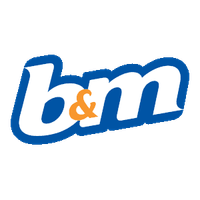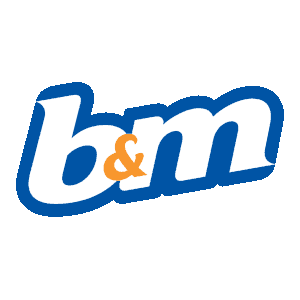
B&M European Value Retail SA
LSE:BME


| US |

|
Johnson & Johnson
NYSE:JNJ
|
Pharmaceuticals
|
| US |

|
Berkshire Hathaway Inc
NYSE:BRK.A
|
Financial Services
|
| US |

|
Bank of America Corp
NYSE:BAC
|
Banking
|
| US |

|
Mastercard Inc
NYSE:MA
|
Technology
|
| US |

|
UnitedHealth Group Inc
NYSE:UNH
|
Health Care
|
| US |

|
Exxon Mobil Corp
NYSE:XOM
|
Energy
|
| US |

|
Pfizer Inc
NYSE:PFE
|
Pharmaceuticals
|
| US |

|
Palantir Technologies Inc
NYSE:PLTR
|
Technology
|
| US |

|
Nike Inc
NYSE:NKE
|
Textiles, Apparel & Luxury Goods
|
| US |

|
Visa Inc
NYSE:V
|
Technology
|
| CN |

|
Alibaba Group Holding Ltd
NYSE:BABA
|
Retail
|
| US |

|
3M Co
NYSE:MMM
|
Industrial Conglomerates
|
| US |

|
JPMorgan Chase & Co
NYSE:JPM
|
Banking
|
| US |

|
Coca-Cola Co
NYSE:KO
|
Beverages
|
| US |

|
Walmart Inc
NYSE:WMT
|
Retail
|
| US |

|
Verizon Communications Inc
NYSE:VZ
|
Telecommunication
|
Utilize notes to systematically review your investment decisions. By reflecting on past outcomes, you can discern effective strategies and identify those that underperformed. This continuous feedback loop enables you to adapt and refine your approach, optimizing for future success.
Each note serves as a learning point, offering insights into your decision-making processes. Over time, you'll accumulate a personalized database of knowledge, enhancing your ability to make informed decisions quickly and effectively.
With a comprehensive record of your investment history at your fingertips, you can compare current opportunities against past experiences. This not only bolsters your confidence but also ensures that each decision is grounded in a well-documented rationale.
Do you really want to delete this note?
This action cannot be undone.

| 52 Week Range |
324.8
567
|
| Price Target |
|
We'll email you a reminder when the closing price reaches GBX.
Choose the stock you wish to monitor with a price alert.

|
Johnson & Johnson
NYSE:JNJ
|
US |

|
Berkshire Hathaway Inc
NYSE:BRK.A
|
US |

|
Bank of America Corp
NYSE:BAC
|
US |

|
Mastercard Inc
NYSE:MA
|
US |

|
UnitedHealth Group Inc
NYSE:UNH
|
US |

|
Exxon Mobil Corp
NYSE:XOM
|
US |

|
Pfizer Inc
NYSE:PFE
|
US |

|
Palantir Technologies Inc
NYSE:PLTR
|
US |

|
Nike Inc
NYSE:NKE
|
US |

|
Visa Inc
NYSE:V
|
US |

|
Alibaba Group Holding Ltd
NYSE:BABA
|
CN |

|
3M Co
NYSE:MMM
|
US |

|
JPMorgan Chase & Co
NYSE:JPM
|
US |

|
Coca-Cola Co
NYSE:KO
|
US |

|
Walmart Inc
NYSE:WMT
|
US |

|
Verizon Communications Inc
NYSE:VZ
|
US |
This alert will be permanently deleted.
 B&M European Value Retail SA
B&M European Value Retail SA
B&M European Value Retail SA
Nestled in the retail landscape is B&M European Value Retail SA, a company that has carved its niche in the value-for-money segment, offering an extensive range of products at competitive prices. Born out of the vision to provide budget-friendly shopping options, B&M has expanded its footprint primarily across the UK, where it operates a growing network of stores. The company’s strength lies in its diverse product assortment, which spans groceries, household goods, toys, and seasonal merchandise, among others. By leveraging a keen eye for market trends and consumer demand, B&M ensures that its offerings remain both relevant and appealing, often sourced directly from manufacturers to keep prices low. This direct procurement strategy maximizes operational efficiency and minimizes cost, allowing B&M to pass on tangible savings to its customers.
As B&M continues to grow, its business strategy revolves around its high-volume, low-margin model, which effectively drives footfall and sales. By maintaining a tight grip on operational costs and exercising disciplined expansion, B&M bolsters its value proposition, drawing a steady stream of budget-conscious shoppers to its stores. The company also astutely positions its outlets in strategic high-traffic locations, maximizing visibility and accessibility. This retail model thrives on high turnover and the impulse-driven nature of in-store shopping experiences, where customers often find bargains and unique items. By constantly refreshing its products and keeping the customer experience at the forefront, B&M secures its position as a leading player in the value retail sector. Through these strategies, B&M European Value Retail continues to cultivate a loyal consumer base, contributing to its robust revenue streams.

Nestled in the retail landscape is B&M European Value Retail SA, a company that has carved its niche in the value-for-money segment, offering an extensive range of products at competitive prices. Born out of the vision to provide budget-friendly shopping options, B&M has expanded its footprint primarily across the UK, where it operates a growing network of stores. The company’s strength lies in its diverse product assortment, which spans groceries, household goods, toys, and seasonal merchandise, among others. By leveraging a keen eye for market trends and consumer demand, B&M ensures that its offerings remain both relevant and appealing, often sourced directly from manufacturers to keep prices low. This direct procurement strategy maximizes operational efficiency and minimizes cost, allowing B&M to pass on tangible savings to its customers.
As B&M continues to grow, its business strategy revolves around its high-volume, low-margin model, which effectively drives footfall and sales. By maintaining a tight grip on operational costs and exercising disciplined expansion, B&M bolsters its value proposition, drawing a steady stream of budget-conscious shoppers to its stores. The company also astutely positions its outlets in strategic high-traffic locations, maximizing visibility and accessibility. This retail model thrives on high turnover and the impulse-driven nature of in-store shopping experiences, where customers often find bargains and unique items. By constantly refreshing its products and keeping the customer experience at the forefront, B&M secures its position as a leading player in the value retail sector. Through these strategies, B&M European Value Retail continues to cultivate a loyal consumer base, contributing to its robust revenue streams.





























 You don't have any saved screeners yet
You don't have any saved screeners yet
